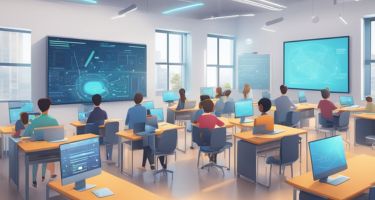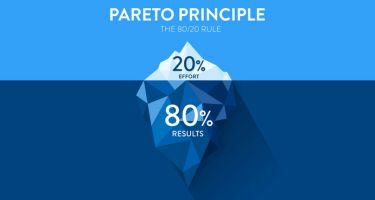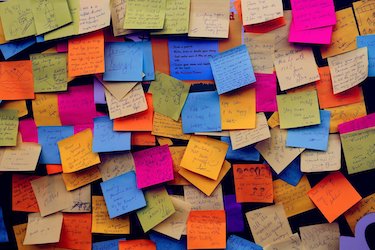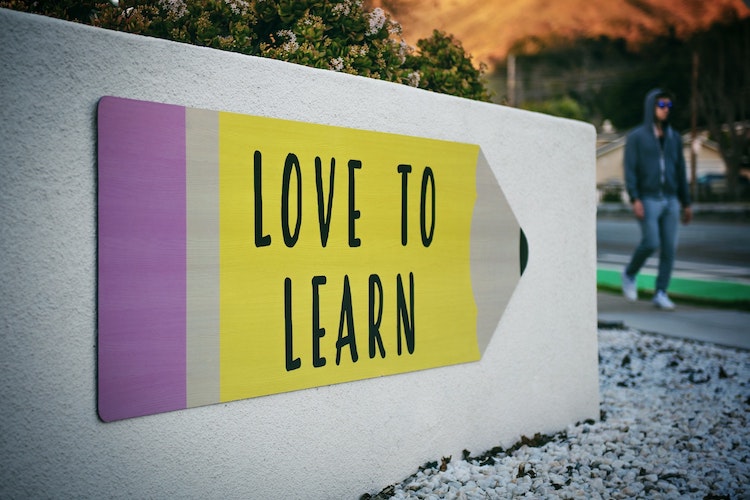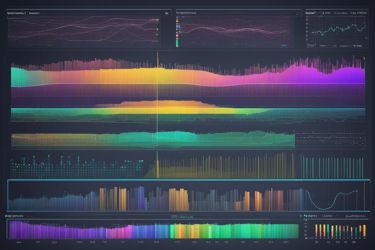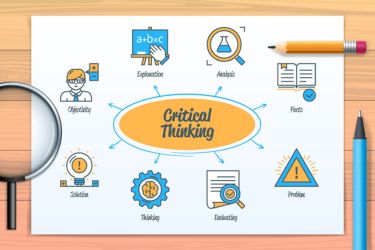In the diverse landscape of education, one size does not fit all. Learning styles, often overlooked but profoundly impactful, play a pivotal role in how individuals absorb and process information. From visual learners who thrive on imagery to auditory learners who excel through sound, and kinesthetic learners who grasp concepts through hands-on experiences, understanding these preferences is paramount in crafting effective teaching strategies.
A Brief Overview of Learning Styles
Learning styles encompass a spectrum of cognitive preferences that influence how individuals learn best. These styles are often categorised into visual, auditory, and kinesthetic modalities, each offering unique pathways to comprehension and retention.
The Importance of Understanding Individual Learning Preferences
Recognising and accommodating individual learning preferences isn't just a nicety—it's a necessity. By acknowledging and leveraging these preferences, educators can unlock the full potential of their students. Whether it's tailoring lesson plans, adjusting teaching methods, or providing diverse learning materials, catering to individual learning styles can lead to more engaged, motivated, and successful learners. In the following exploration, we delve deeper into the significance of these learning styles and unveil strategies to tailor techniques for optimal learning outcomes.
Understanding Learning Styles
Visual Learners
Characteristics and Preferences: Visual learners thrive on images, diagrams, and spatial representations. They prefer seeing information presented in charts, graphs, or through demonstrations. These learners have a strong ability to visualise concepts and remember information when it's presented visually.
Effective Learning Techniques for Visual Learners:
Utilise visual aids such as diagrams, charts, and infographics to illustrate key concepts. Incorporate colourful and engaging presentations with visually stimulating content. Encourage note-taking with the use of visual cues, such as mind maps or doodles. Integrate multimedia resources like videos or slideshows to reinforce learning visually.Auditory Learners
Characteristics and Preferences: Auditory learners prefer learning through listening and verbal communication. They excel in environments where information is presented through lectures, discussions, or audio recordings. These learners have a keen ability to absorb information through sound and benefit from verbal explanations.
Effective Learning Techniques for Auditory Learners:
- Conduct engaging lectures and discussions to present information verbally.
- Provide audio recordings of lectures or reading materials for review.
- Encourage group discussions and debates to facilitate verbal interaction.
- Utilise mnemonic devices or rhymes to aid in memorisation through sound.
Kinesthetic Learners
Characteristics and Preferences: Kinesthetic learners are hands-on and experiential learners who prefer to learn by doing. They thrive in environments where they can engage in physical activities, experiments, or real-life simulations. These learners learn best when they can actively manipulate objects or participate in hands-on experiences.
Effective Learning Techniques for Kinesthetic Learners:
- Incorporate hands-on activities, experiments, or role-playing exercises into lessons.
- Provide opportunities for kinesthetic learners to engage in tactile learning experiences.
- Encourage movement and physical interaction during learning sessions.
- Utilise manipulative or interactive simulations to reinforce concepts through physical engagement.
Understanding the unique characteristics and preferences of visual, auditory, and kinesthetic learners allows educators to tailor learning experiences that cater to individual needs, ultimately maximising learning outcomes for all students.
Benefits of Tailoring Techniques to Learning Styles
When educators tailor their teaching techniques to accommodate diverse learning styles, a myriad of benefits emerges, revolutionising the educational landscape. Let's explore these benefits in detail:
Enhanced Engagement and Motivation
By catering to individual learning preferences, educators can ignite a spark of interest and enthusiasm in their students. When students feel that their learning needs are understood and respected, they become more engaged in the learning process. Visual learners become captivated by colourful illustrations, auditory learners eagerly participate in lively discussions, and kinesthetic learners eagerly dive into hands-on activities. This heightened engagement not only fosters a more enjoyable learning experience but also cultivates a deeper sense of motivation to explore and understand the subject matter.
Improved Retention and Comprehension
One of the most significant advantages of tailoring techniques to learning styles is the enhancement of retention and comprehension. When information is presented in a manner that aligns with an individual's preferred learning modality, it becomes more accessible and memorable. Visual learners vividly recall images and diagrams, auditory learners effortlessly retain information conveyed through speech, and kinesthetic learners solidify their understanding through hands-on experiences. This personalised approach to learning ensures that students not only grasp concepts more effectively but also retain them for longer periods, laying a solid foundation for future learning endeavours.
Increased Efficiency in Learning
Efficiency lies at the heart of tailored teaching techniques. By capitalising on students' innate learning preferences, educators can streamline the learning process, making it more efficient and effective. Rather than employing generic teaching methods that may not resonate with all students, tailored techniques optimise the use of instructional time and resources. Visual learners absorb information quickly through visual aids, auditory learners thrive in dialogue-rich environments, and kinesthetic learners excel in active learning scenarios. This targeted approach to instruction maximises learning outcomes while minimising unnecessary obstacles, ensuring that every moment spent in the classroom is purposeful and productive.
In essence, the benefits of tailoring techniques to learning styles extend far beyond the confines of the classroom, shaping students into confident, self-directed learners equipped with the tools they need to succeed in an ever-evolving world.
Strategies for Tailoring Learning Techniques
In the pursuit of optimising learning outcomes, it's essential to employ strategies that cater to the diverse learning styles of students. Let's explore three effective strategies for tailoring learning techniques:
Assessment of Learning Style Preferences
The first step in tailoring learning techniques is to assess the learning style preferences of individual students. Conducting thorough assessments allows educators to gain insights into how each student learns best. Various assessment tools, such as questionnaires, observation techniques, and informal discussions, can help identify whether students lean towards visual, auditory, or kinesthetic learning modalities. By understanding these preferences, educators can tailor their teaching strategies to better suit the needs of their students.
Adapting Teaching Methods and Materials
Once learning style preferences have been identified, educators can adapt their teaching methods and materials to align with these preferences. For visual learners, incorporating visually-rich content such as diagrams, charts, and videos can enhance comprehension and engagement. Auditory learners may benefit from lectures, discussions, and audio recordings that emphasise verbal communication. Kinesthetic learners thrive in hands-on environments, so incorporating interactive activities, experiments, and real-world applications can deepen their understanding of concepts. By customising teaching methods and materials to match the preferred learning styles of students, educators can create a more conducive learning environment that promotes success for all learners.
Incorporating Multi sensory Approaches
An effective way to accommodate diverse learning styles is by incorporating multi sensory approaches into the curriculum. Multi sensory learning engages multiple senses simultaneously, appealing to visual, auditory, and kinesthetic learners alike. For example, educators can integrate activities that involve seeing, hearing, and doing, such as interactive simulations, group discussions, and hands-on experiments.
By providing opportunities for students to learn through a variety of sensory experiences, educators can ensure that every student has access to the information in a way that resonates with them. This holistic approach to learning not only enhances comprehension but also fosters a deeper connection to the subject matter.
In conclusion, employing strategies such as assessing learning style preferences, adapting teaching methods and materials, and incorporating multi sensory approaches can effectively tailor learning techniques to meet the diverse needs of students. By embracing these strategies, educators can create an inclusive learning environment where every student has the opportunity to thrive and succeed.
Case Studies and Examples
In the realm of education, the proof of efficacy lies in real-life examples of successful implementation. Let's delve into case studies and testimonials that illuminate the power of tailored learning techniques:
Real-life Examples of Successful Implementation
Visual Learning Success Story: In a high school biology class, the teacher implemented visual learning techniques to accommodate the diverse needs of students. By incorporating colourful diagrams, interactive animations, and visually-rich presentations, the teacher transformed complex biological concepts into digestible visual representations. As a result, students experienced significant improvements in comprehension and retention. One student remarked, "Before, biology seemed like a maze of words. But now, with visuals, everything just clicks!"
Auditory Learning Triumph: In a college history course, the professor recognised the prevalence of auditory learners among their students. To cater to their needs, the professor introduced lively class discussions, engaging debates, and captivating lectures rich in verbal explanations. Students found themselves immersed in the dynamic discourse, with one commenting, "History came alive in those discussions. I never thought I'd enjoy learning about the past so much!"
Kinesthetic Learning Excellence: At an elementary school, a teacher embraced kinesthetic learning by incorporating hands-on activities into the curriculum. From building models of historical landmarks to conducting science experiments, students actively engaged with the material and made meaningful connections. The teacher observed a notable increase in enthusiasm and understanding among students, stating, "Seeing their eyes light up as they discover through hands-on exploration is truly priceless."
Testimonials from Learners and Educators
Student Testimonial: "As an auditory learner, I used to struggle in class, feeling disconnected from the material. But when my teacher started incorporating discussions and audio recordings, everything changed. Suddenly, learning felt natural, and I found myself eagerly participating in class discussions. Tailoring techniques to my learning style made all the difference!"
Educator Endorsement: "In my years of teaching, I've witnessed firsthand the transformative impact of tailoring learning techniques to individual preferences. By recognising and accommodating diverse learning styles, we empower students to succeed on their terms. The joy of seeing students thrive in a learning environment tailored to their needs reaffirms the importance of personalised education."
These case studies and testimonials serve as compelling evidence of the effectiveness of tailored learning techniques. By embracing individual learning preferences, educators can unlock the full potential of their students and foster a culture of lifelong learning and achievement.
Practical Tips for Learners and Educators
Navigating the realm of tailored learning techniques requires practical insights and actionable strategies. Here are invaluable tips for both learners and educators to optimise the learning experience:
Tips for Self-Assessment of Learning Styles
Reflect on Past Experiences: Take a moment to reflect on past learning experiences. What methods or environments have facilitated your understanding and retention of information?
Experiment with Different Modalities: Experiment with various learning modalities—visual, auditory, kinesthetic—to determine which resonates most with you. Notice how you naturally gravitate towards certain methods.
Use Online Assessments: Utilise online learning style assessments and questionnaires to gain deeper insights into your preferred learning style. Websites like VARK and Learning Style Inventory offer free assessments.
Observe Your Study Habits: Pay attention to your study habits. Do you prefer studying in a quiet environment or with background music? Do you enjoy watching educational videos or reading textbooks?
Seek Feedback: Seek feedback from peers or mentors regarding your learning style. They may offer valuable insights based on their observations of your learning habits.
Strategies for Educators to Accommodate Diverse Learning Preferences
Flexibility in Teaching Methods: Embrace flexibility in your teaching methods to accommodate diverse learning preferences. Incorporate a variety of instructional strategies, including visual aids, auditory lectures, and hands-on activities.
Provide Options: Offer students options for demonstrating their understanding of concepts. Allow for choice in assignments, projects, and assessments to cater to different learning modalities.
Create Multi-sensory Learning Environments: Design learning environments that engage multiple senses. Incorporate visual stimuli, auditory cues, and tactile experiences to appeal to a wide range of learners.
Individualised Support: Provide individualised support to students based on their learning styles. Offer personalised guidance and resources tailored to their preferences to enhance comprehension and retention.
Encourage Collaboration: Foster a collaborative learning environment where students can learn from each other. Encourage group discussions, peer teaching, and collaborative projects to promote diverse perspectives and learning styles.
By implementing these practical tips, both learners and educators can harness the power of tailored learning techniques to optimise learning outcomes and foster a more inclusive and effective learning environment.
Conclusion
As we conclude our exploration of tailored learning techniques, it's crucial to reflect on the key points discussed and reiterate the importance of embracing individual learning styles for optimal outcomes.
Recap of Key Points
Throughout this journey, we've uncovered the significance of recognising and accommodating diverse learning styles:
- We've explored the characteristics and preferences of visual, auditory, and kinesthetic learners.
- We've delved into the benefits of tailoring techniques to learning styles, including enhanced engagement, improved retention, and increased efficiency in learning.
- We've discussed practical strategies for both learners and educators, from self-assessment of learning styles to accommodating diverse preferences in the classroom.
Encouragement to Embrace Individual Learning Styles for Optimal Outcomes
As we move forward, let us embrace the diversity of learning preferences with open arms. Each student is unique, with their own set of strengths and preferences. By acknowledging and embracing individual learning styles, we empower students to learn in ways that resonate with them, unlocking their full potential and fostering a deeper love for learning.
To learners, I encourage you to explore and embrace your preferred learning style. Take ownership of your learning journey, experiment with different techniques, and advocate for your needs. Your journey to academic success begins with understanding how you learn best. To educators, I urge you to cultivate inclusive learning environments where all students feel valued and supported. Embrace flexibility in your teaching methods, personalise instruction to meet the needs of diverse learners, and celebrate the richness of individual differences. Your dedication to tailored learning techniques will empower students to thrive academically and beyond.
In the tapestry of education, each thread—each unique learning style—contributes to the vibrant mosaic of knowledge and growth. Let us continue to champion personalised learning experiences, guided by the principle that diversity in learning leads to unity in achievement. Together, let us embark on a journey where every learner finds their voice, their passion, and their path to success. Embrace individual learning styles, for within them lie the keys to unlocking limitless potential and realizing dreams.
Useful resources
Visual Learning:
Book: "Visual Thinking for Design" by Colin Ware - This book explores the science behind visual perception and provides insights into how to leverage visual thinking for design and learning.
Website: Visual Learning Style Inventory (VARK) - This website offers assessments and resources tailored to visual learners, helping individuals understand their visual learning preferences and providing strategies for effective learning.
Organisation: Visual Teaching Alliance - This organisation promotes the use of visual teaching techniques in education and offers resources, workshops, and professional development opportunities for educators interested in enhancing visual learning experiences.
Auditory Learning:
Book: "Listening: The Forgotten Skill" by Madelyn Burley-Allen - This book delves into the art of active listening and provides practical techniques for improving listening skills, making it valuable for auditory learners and anyone interested in enhancing their listening abilities.
Website: Auditory Learning Style Inventory (VARK) - Similar to the Visual Learning Style Inventory, this website offers assessments and resources specifically designed for auditory learners, helping individuals understand their auditory learning preferences and providing tailored learning strategies.
Organisation: The Auditory Learning Association (ALA) - This organisation advocates for the recognition and accommodation of auditory learning preferences in education. They offer resources, research, and support for educators and learners interested in auditory learning techniques.
Kinesthetic Learning:
Book: "The Kinesthetic Classroom: Teaching and Learning through Movement" by Traci Lengel and Mike Kuczala - This book explores the benefits of kinesthetic learning and provides practical strategies for incorporating movement into the classroom to enhance engagement and learning.
Website: Kinesthetic Learning Style Inventory (VARK) - Similar to the Visual and Auditory Learning Style Inventories, this website offers assessments and resources tailored to kinesthetic learners, helping individuals understand their kinesthetic learning preferences and providing strategies for effective learning through movement.
Organization: The Kinesthetic Learning Center - This organisation provides training, resources, and consulting services to educators interested in implementing kinesthetic learning techniques in their classrooms. They offer workshops, seminars, and online resources to support kinesthetic teaching and learning practices.
These resources offer valuable insights and practical strategies for understanding and accommodating different learning styles, whether visual, auditory, or kinesthetic. Whether you're a learner seeking to enhance your study techniques or an educator looking to create more inclusive and effective learning environments, these resources can provide valuable guidance and support.



